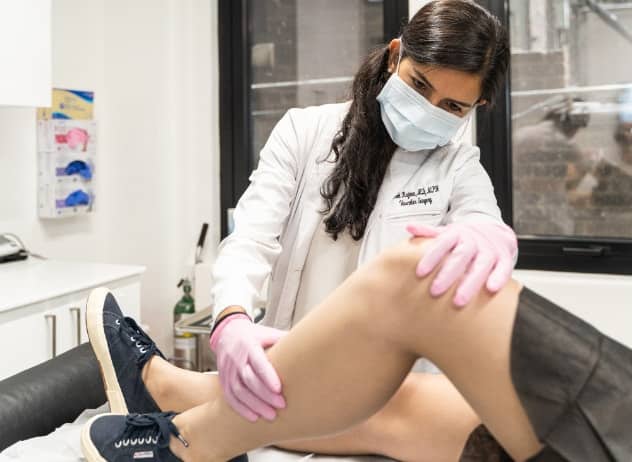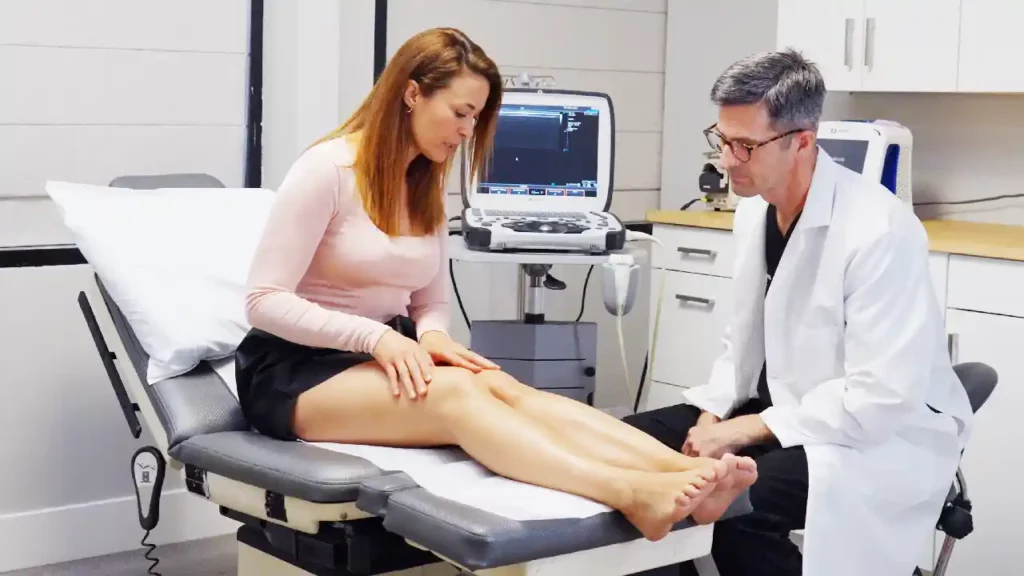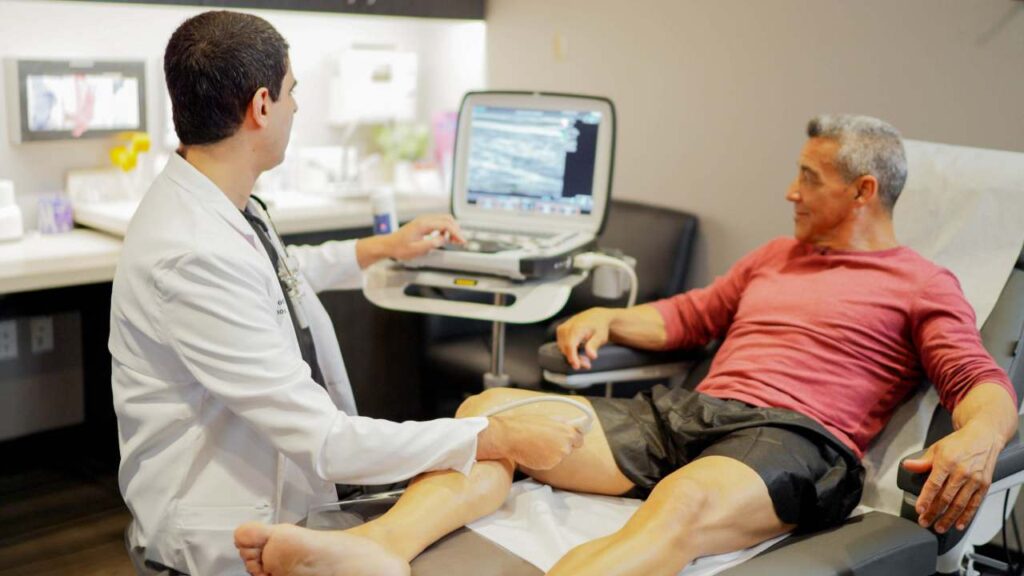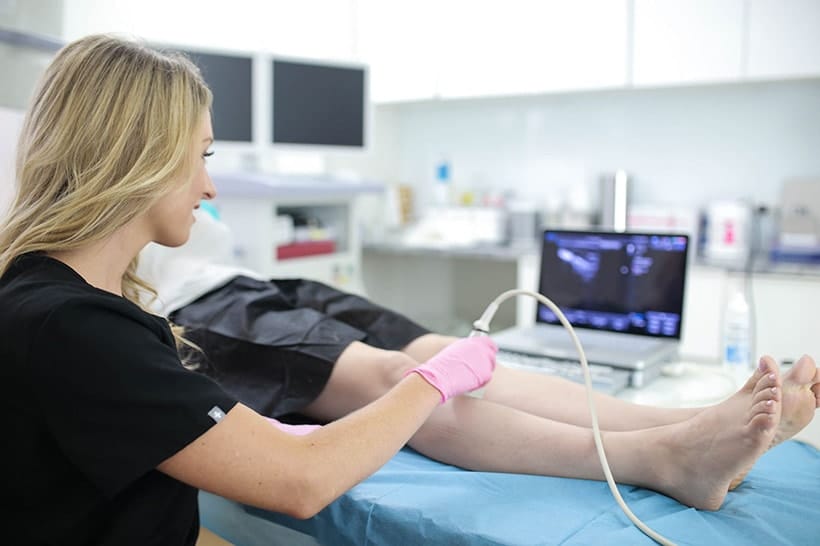1) Find the Right Doctor to Remove Varicose Veins
There are several types of vascular “specialists” in California. Some focus primarily on arterial surgery, repairing ruptured arteries and aneurysms, while others specialize in minimally invasive venous medicine, handling everything from tiny spider veins to large varicose veins. Some are dermatologists who are trained in cosmetic repairs, like surface lasers for spider veins on the face, rather than varicose veins.
If you’re wondering how to get rid of varicose veins, the first step is choosing the right doctor. That would be a minimally invasive vein specialist who treats the most complicated veins with the least invasive method possible. Following the right varicose vein stripping steps is essential to successful treatment. The first step is seeing a doctor who can determine whether you actually need your vein stripped, or whether it can be removed non-invasively. Click HERE to ask Harvard-trained, California vein doctors whether varicose vein stripping is right for you.

2) Inverted Veins Stripping, GSV Vein Treatment: How It Works
The exact varicose vein stripping steps vary depending on the severity of the vein damage, as well as the patient’s medical history. In addition, surgeries like ambulatory phlebectomy deviate from traditional vein stripping. But here’s a typical succession of steps for traditional vein stripping.
- The vein doctor locates the vein with ultrasound and looks for problems like blood clots, broken valves, and connecting veins that could be problematic.
- They administer general or spinal anesthesia and cleanse the treatment area.
- The vein specialist makes a series of incisions to access the vein. Often, these are made near the groin, knee, calf, or ankle, or in several locations if an entire vein is being removed.
- The vein doctor will then thread a thin, flexible, plastic wire or hook through the highest incision and wrap it around the vein and pull the vein out of the lowest incision. The doctor might cut out a portion and tie it off at the bottom of your damaged vein (vein stripping with ligation) or remove the entire vein.
- The incisions are stitched closed and the patient enters the recovery period where they are observed for signs of bleeding, infection, blood clots, or anesthesia complications.
- Patients remain in the vein center for a period ranging from an hour to overnight, depending on the patient’s risks.
- Patients are sent home with bandages and instructions for post-procedural care.
3) Investigate the Vein Removal Surgery Name
The medical name for vein stripping, (also called “stripping and ligation”) is phlebectomy. A newer technique, ambulatory phlebectomy, shares similarities with traditional phlebectomy, but has key differences. Ask which surgery your doctor is recommending. Traditional vein stripping commonly requires general anesthesia and several deep incisions. It often requires a hospital stay and a recovery period where you need to stay off your feet.
Ambulatory phlebectomy is also a surgical procedure, but it employs local anesthesia and smaller punctures, rather than large incisions. Patients remain awake and are mobile sooner than with traditional vein stripping. It’s important to determine which vein removal surgery you are having, so you can prepare for transportation, recovery time, post-procedural assistance, and expenses.
4) Ask the Vascular Vein Doctor About Their Techniques
Before agreeing to varicose vein stripping surgery, ask your vascular surgeon or vein doctor about their alternative techniques. If they only perform surgery, get a second opinion, since newer techniques have displaced surgery for the majority of patients. Choose a
California vein doctor who performs, and even favors, radiofrequency ablation, sclerotherapy, vein adhesives, endovenous laser ablation, or mechanochemical ablation.
Some patients do require vein stripping surgery, particularly if they have a blood clot, DVT, or highly enlarged and tortuous veins. But most patients are better suited to other methods, so always ask about your options first. Our award-winning CA vein doctors offer a full range of surgical alternatives and have a proven track record of treatment success.
5) Distinguish Vascular Surgery & Varicose Veins Treatment
Some people assume all varicose veins treatments are surgical in nature. In reality, most patients don’t require surgical removal of varicose veins. Vascular surgery encompasses surgery for various blood vessels, including arteries, and it’s no longer the first line of treatment for varicose veins. The introduction of less invasive techniques over the past three decades has greatly increased the options for patients looking for a non-surgical approach. Instead of searching for a vascular surgeon, look for a vein center in California with doctors who specialize in newer techniques as well.
6) Differentiate “Best Spider Vein Removal Near Me” & Surgery
While spider veins and varicose veins often stem from the same thing (broken valves in your veins), they might require different treatments. When blood collects in a vein (due to the aforementioned valve failure), the vein becomes engorged and generates tiny offshoots (spider veins), or contorts to contain the excess (varicose veins). Spider veins are smaller and less protuberant, and they are easily treated with methods like sclerotherapy or radiofrequency ablation. They almost never require surgery.
Varicose veins are larger and often more painful, and are also prone to things like profuse bleeding, venous ulcerations, and venous stasis dermatitis. These occasionally require surgery, but most often, they’re treated with tools like sclerosants, thermal energy, medical adhesives, or special catheters that destroy the vein. If you are prescribed varicose vein stripping surgery, ask your doctor about alternatives. And if you are prescribed spider vein stripping surgery, choose a new vein center. Removing spider veins is done endovenously or through the skin, rather than by surgical extraction.
7) Get a Second Opinion on Varicose Veins Treatment Surgery
As mentioned, today’s varicose veins treatments are quite different than they were in previous generations. New technology enables precise, gentle, painless procedures that “remove” veins without actually cutting them out of the body. If these options aren’t explained to you, ask why or seek a second opinion. Some patients do require varicose vein surgery, but make sure minimally invasive options aren’t offered to you because of your specific condition rather than the vein doctor’s inability to perform them.
8) Compare Methods Like Vein Stripping vs Ablation
When comparing vein stripping vs ablation, there are several advantages to minimally invasive ablation. These procedures are faster, less invasive, more affordable, safer, and they require less recovery time than surgery. Before assuming varicose vein stripping is your only option, book a consultation with our team to learn about non-surgical varicose vein treatments.
9) Request Varicose Vein Removal Before and After Images
Ask your vein specialist to see images of varicose vein removal before and after the procedure. They should have a gallery of successful treatments to provide evidence of their expertise. You don’t want a vein doctor with decades of experience who only performs outdated procedures. Likewise, you don’t want a vein doctor who is brand new to the methods they use. It’s best to select a team of vein specialists with a depth of experience and a collaborative approach, should they encounter an unexpected complication.
10) Weigh the Varicose Vein Treatment Risks
If you’re considering varicose vein treatment of any kind, ask your vein doctor about the risks and how they apply specifically to you. Minimally invasive vein treatments are safer than varicose vein stripping surgery for the majority of patients, but there are some patients for whom extracting the vein is safer than treating it inside the body. Risks are greatly reduced when you choose the right procedure and the right vein doctor to perform it.
11) Establish Post Varicose Vein Surgery Care
Preparing for recovery from varicose vein treatment is an important step to take before the procedure. Patients who choose minimally invasive treatments can typically drive themselves to and from the appointment and resume their usual activities, including work and moderate exercise, immediately after the procedure. Surgical vein stripping involves more planning, since general anesthesia requires someone to drive you to and from the appointment, and you might need to stay off your feet for a few days after surgery.
12) Ask About Varicose Vein Stripping Steps or Ablation Soon
If you’re postponing a varicose vein consultation because you are wary of vein stripping surgery, don’t delay any longer. There are many non-surgical ways to treat varicose veins, including radiofrequency ablation, endovenous laser ablation, and ablation conducted with sclerosants and adhesives. Furthermore, ultrasound guidance and precision tools have reduced the risks and discomfort for those who do require surgery. Seek vein care soon to prevent unnecessary complications of varicose veins, like cramping, itching, heaviness, swelling, hyperpigmentation, bleeding, and ulcerations, in addition to more varicosities.






